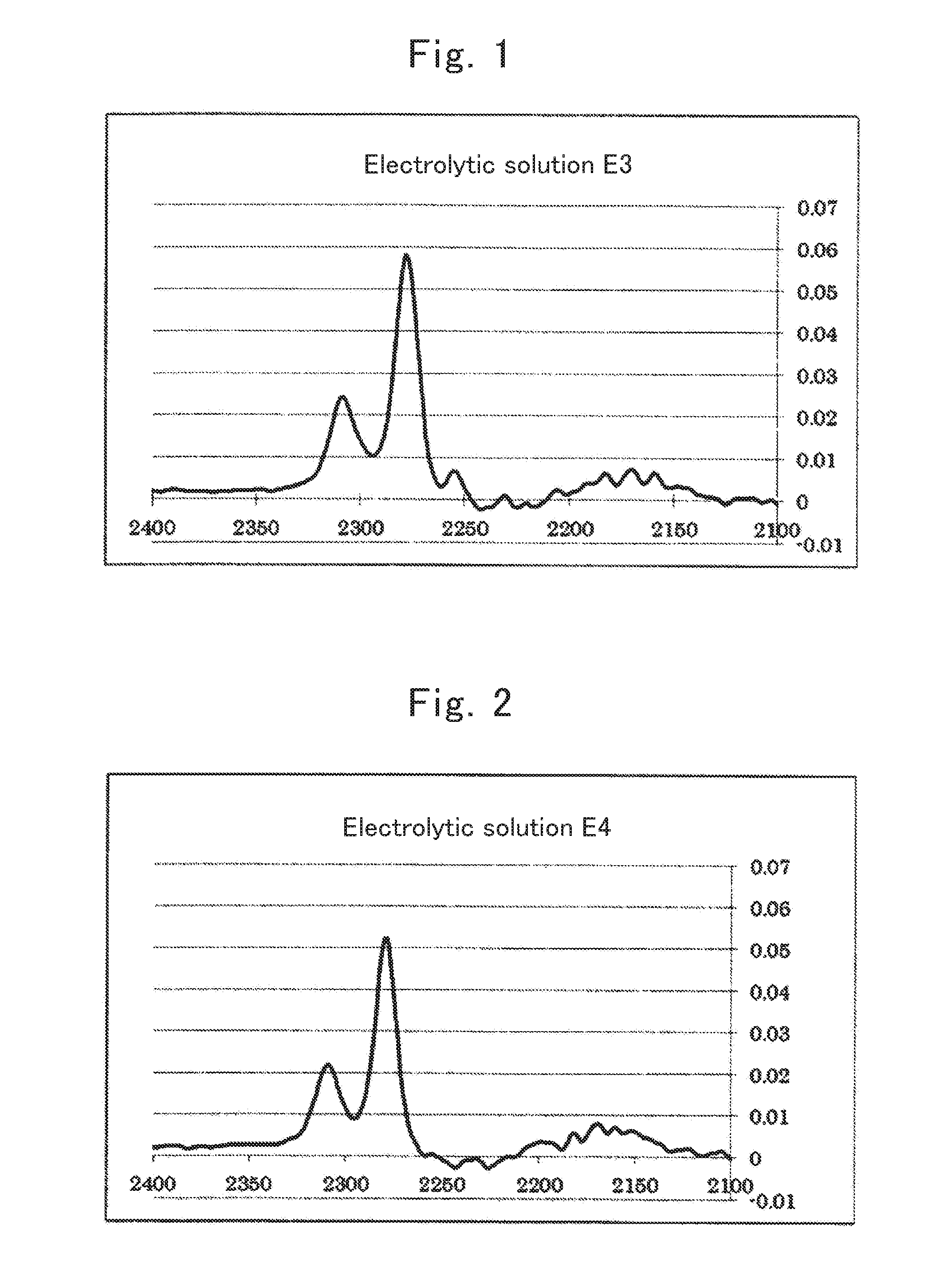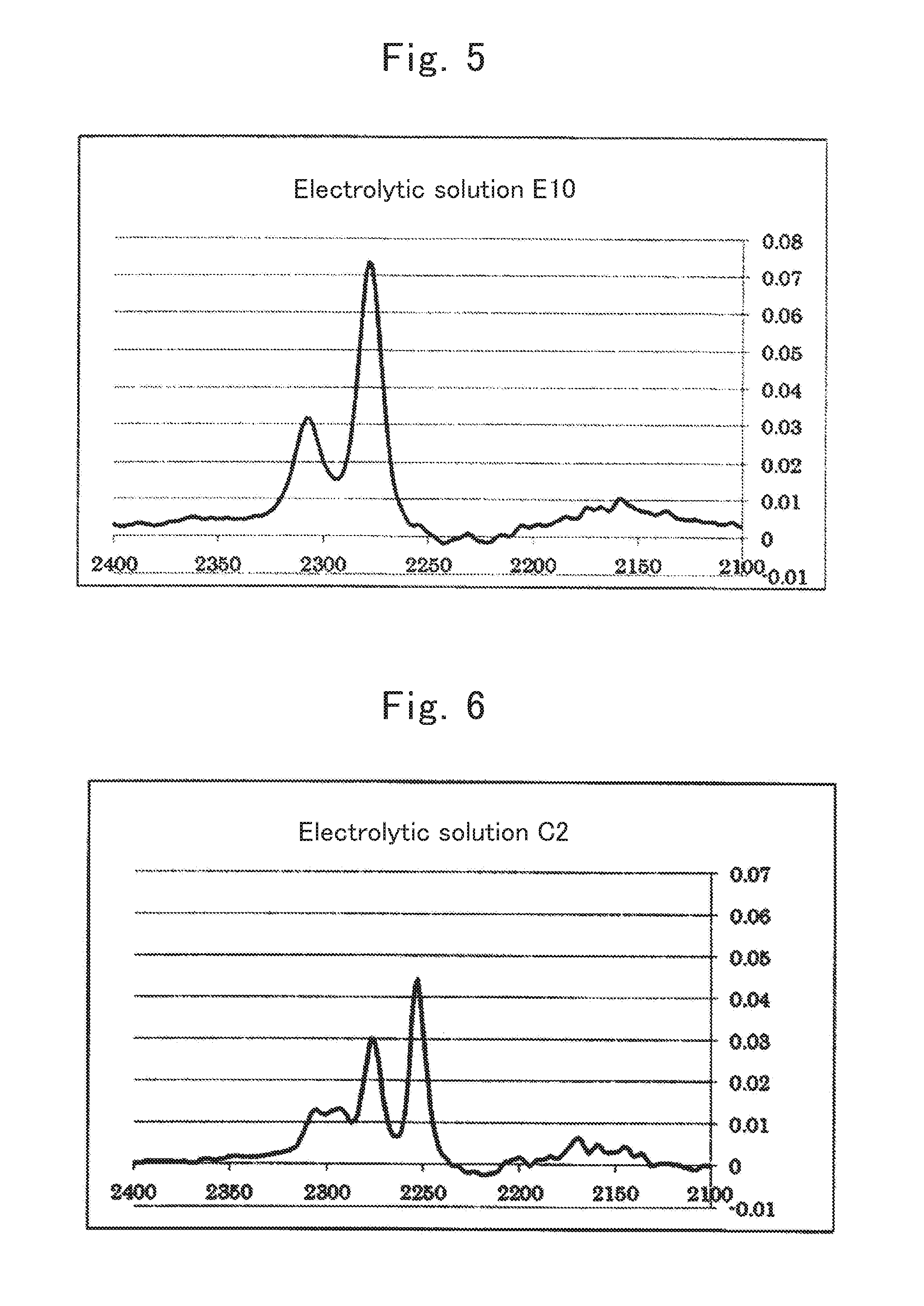Nonaqueous secondary battery
a secondary battery, non-aqueous technology, applied in the direction of batteries, cell components, electrochemical generators, etc., can solve the problems of overheating electrolytic solution being released outside the system, lithium metal complex oxide described above becoming structurally unstable, and deteriorating input-output characteristics of the battery, etc., to achieve excellent input-output characteristics, improve safety, and perform reversible charging/discharging reactions.
- Summary
- Abstract
- Description
- Claims
- Application Information
AI Technical Summary
Benefits of technology
Problems solved by technology
Method used
Image
Examples
example a-1
[0465]A lithium ion secondary battery of Example A-1 includes a positive electrode, a negative electrode, an electrolytic solution, and a separator.
[0466]The positive electrode includes a positive electrode active material layer, and a current collector coated with the positive electrode active material layer. The positive electrode active material layer includes a positive electrode active material, a binding agent, and a conductive additive. The positive electrode active material is formed from a lithium-containing metal oxide with a layered rock salt structure represented by LiNi0.5Co0.2Mn0.3O2. The binding agent is formed from polyvinylidene fluoride (PVDF). The conductive additive is formed from acetylene black (AB). The current collector is formed from an aluminum foil having a thickness of 20 μm. The contained mass ratio of the positive electrode active material, the binding agent, and the conductive additive is 94:3:3 when mass of the positive electrode active material layer...
example a-2
[0471]A lithium ion secondary battery of Example A-2 is similar to that of Example A-1 except for using electrolytic solution E4 as the electrolytic solution.
example a-3
[0472]A lithium ion secondary battery of Example A-3 is similar to that of Example A-1 except for using electrolytic solution El as the electrolytic solution.
PUM
| Property | Measurement | Unit |
|---|---|---|
| relative permittivity | aaaaa | aaaaa |
| mass % | aaaaa | aaaaa |
| mass % | aaaaa | aaaaa |
Abstract
Description
Claims
Application Information
 Login to View More
Login to View More - R&D
- Intellectual Property
- Life Sciences
- Materials
- Tech Scout
- Unparalleled Data Quality
- Higher Quality Content
- 60% Fewer Hallucinations
Browse by: Latest US Patents, China's latest patents, Technical Efficacy Thesaurus, Application Domain, Technology Topic, Popular Technical Reports.
© 2025 PatSnap. All rights reserved.Legal|Privacy policy|Modern Slavery Act Transparency Statement|Sitemap|About US| Contact US: help@patsnap.com



